Introducing your dog to a new dog friend is a bigger process than one would think. If you allow dogs to meet without a proper introduction, there is the chance of a dog fight. High arousal, equals bad behavior. Dogs can get overwhelmed and reactive negatively if a high energy dog gets right in their face. To dogs it is rude and unwanted behavior. If your dog is more timid or reserved, a slow introduction will give them the confidence to say hello properly. To make sure everyone meets in the best way possible, follow these steps!

The Right Tools For Introducing Dogs
When it comes to introducing your dog to a new dog, the process will be on leash. Both dogs should be hooked to a six foot training leash. Make sure to inspect your leashes, checking that there are no tears and that the clasp is working properly.
The best harness that you could use for this procedure would be an EasyWalk Harness. They are extremely comfortable to wear, for the dog, and are structured to avoid excessive pulling. There are three parts to the harness. One strap goes across the dog`s back, the second under the armpits, and the last goes across the chest. The straps are labeled to help fit it to the dog. The EasyWalk should be snug on the dog so be sure to test for wiggle room. Less wiggle room the better for EasyWalk Harnesses.
After your dog is fitted for their harness, clip the leash onto the front of the harness and onto the collar. This helps prevent pulling and reduces the chances of the dog walking backwards out of the harness.
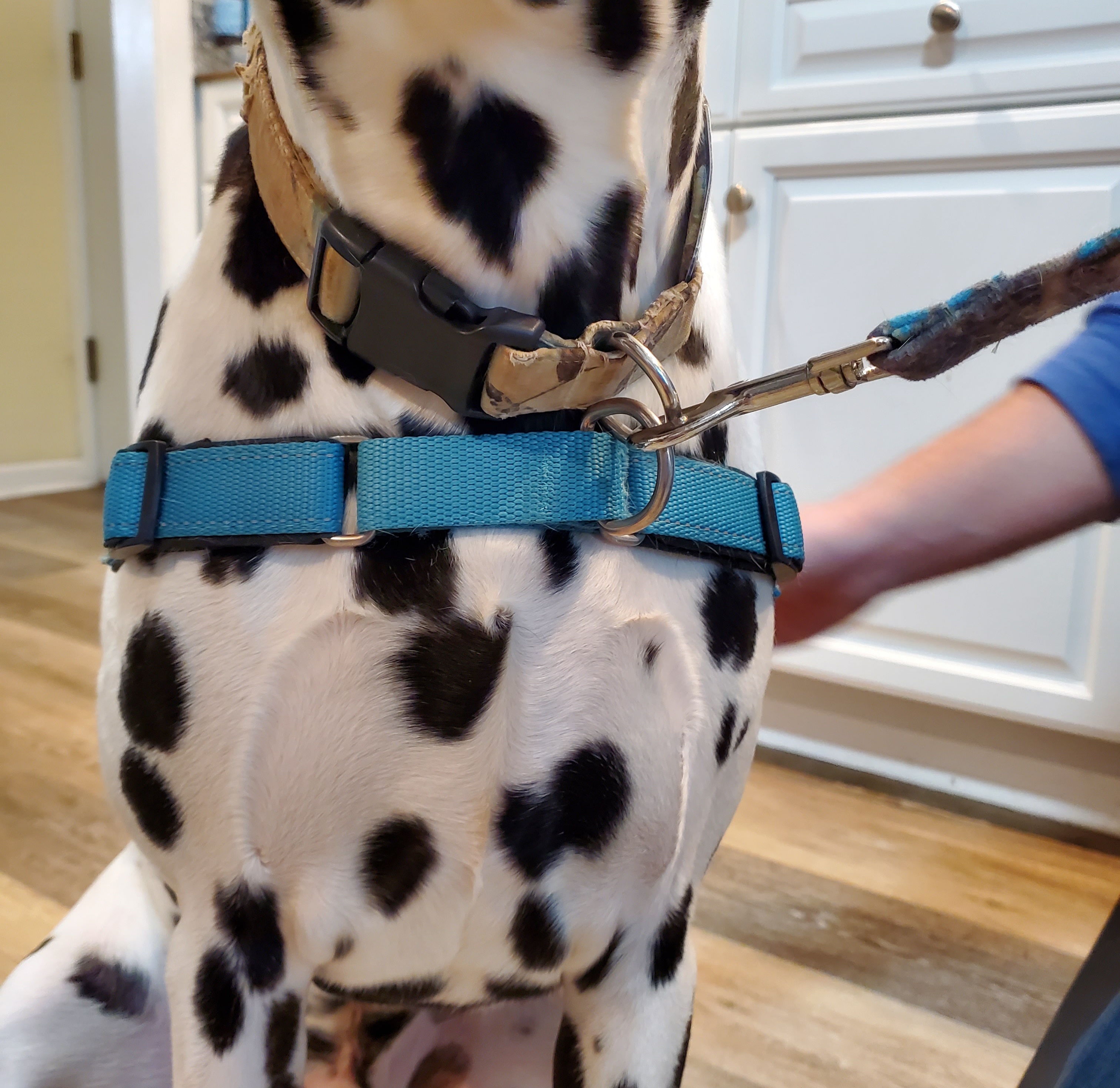
Parallel Walk
Now that every dog has the equipment they need and is on properly, time to start introducing your dog to the new dog. First step is to walk your dog and the new dog, side-by-side but without interaction. The best way to do this is keep about three yards apart from the dogs walking. The best practice, I have found, is to have one set of dog and human walk on the sidewalk and the other set walk in the road on the same side of the sidewalk you’re utilizing. Everyone should walk like this for up to ten minutes.
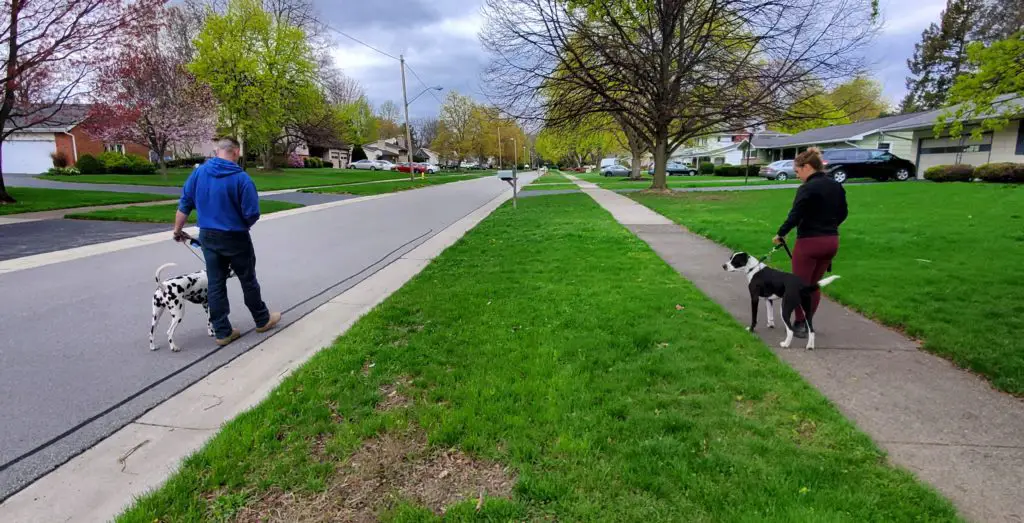
Redirecting While Introducing Dogs
At any point, if either dog starts excitedly barking and pulling excessively you will need to redirect them. The best way to do this is to walk through your dog, away from the other dog they are focusing on. As you walk through your dog, away from the other dog, their body will turn with you and end up facing away from the dog. You will then turn again, away from the dog, to continue walking in the same direction you were headed.
Keep redirecting your dog until they are calm enough to continue the walk. If one dog is being redirected, the other should slow down and wait for the dog to calm down to begin walking again. Never move onto the next step of introducing your dog if someone is too interested in the other dog. Only move forward if everyone, dog and human, is calm and relaxed. If you feel that the redirecting is not working, stop the walk and try again another day.
Your Dog Leads
At this point, the two dogs have been walking side-by-side for about ten minutes quietly and respectfully. The next step is to have your dog walk in front of the new dog. For this step, you want both dogs on the sidewalk or road. The point of this is to have the dogs walk in a line, but not interacting, so that the dog that follows can smell the other dog’s scent as they leave it behind in the air. Do this for about five minutes.
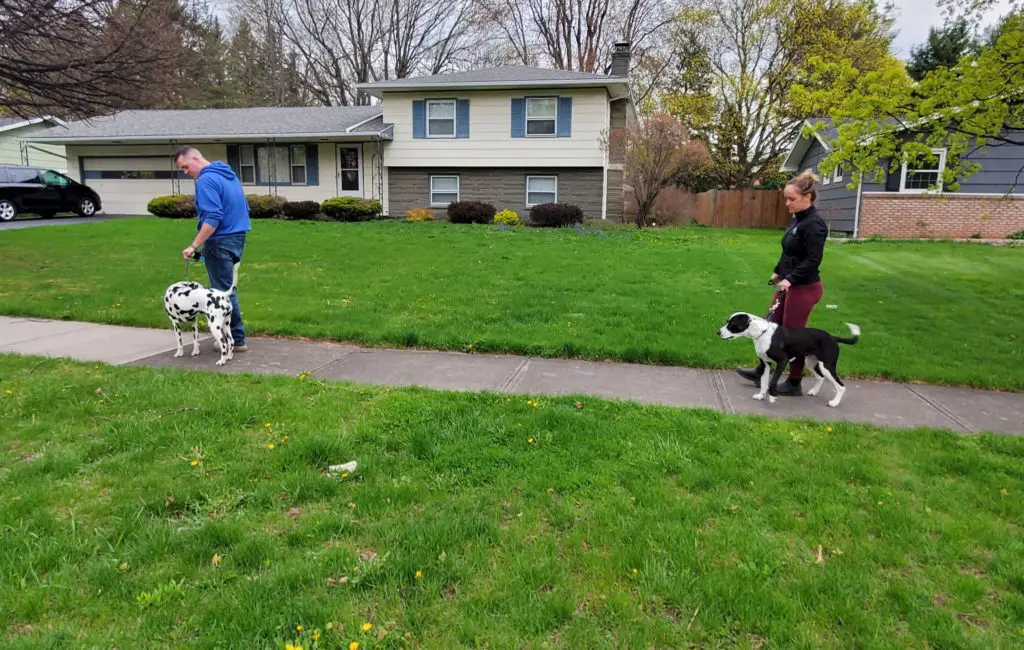
New Dog Leads
This next step is super simple. Both sets of dogs and humans turn around and walk the opposite way! Now the new dog is leading the walk and your dog is following behind sniffing their smells in the air. Continuing walking like this for another five minutes.
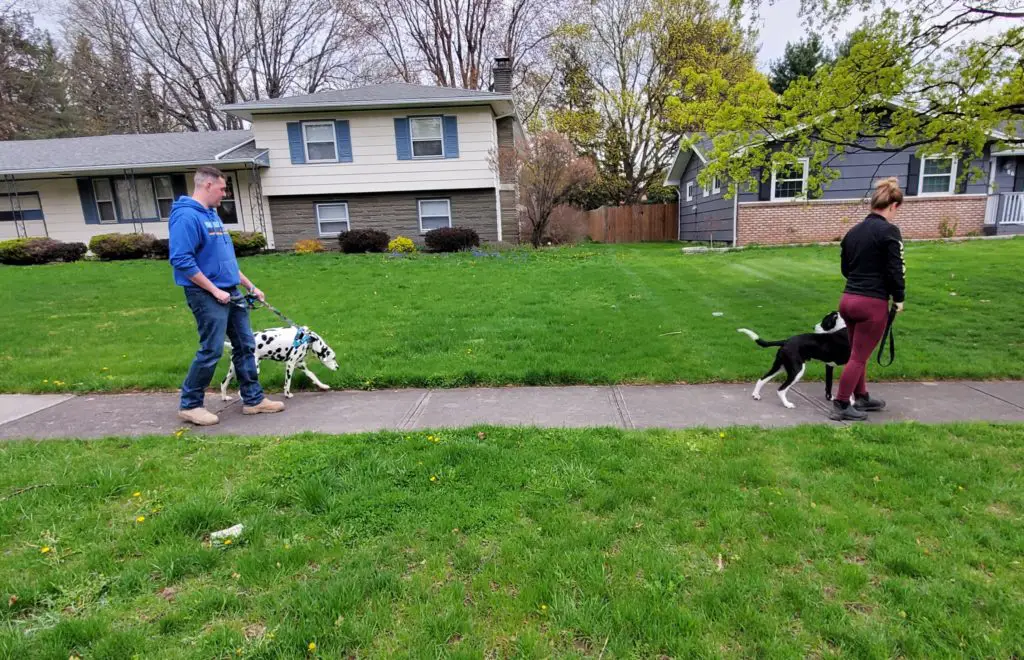
Closer Parallel Walk
Now it is time for the dogs to get a little closer. While on the sidewalk, have the handler with the new dog move to their left. Then have you and your dog walk to catch up. Everyone should be walking parallel with about a yard and one human in between the dogs. This should be done with another ten minutes.

Allow Sniffs
Last step before the fun! This will be the first step, in this process, that the two dogs will interact. While the group is walking, have your dog walk forward so they are slightly in front of the group. Then allow the new dog to sniff your dog’s butt. This is how all dogs greet and really understand each other. There are a lot of scents and communicating that happens with a butt sniff. After the new dog does their sniffing, have them walk in front of the group and allow your dog to sniff the new dog. As the sniffing continues, keep the walk going all the way back home.
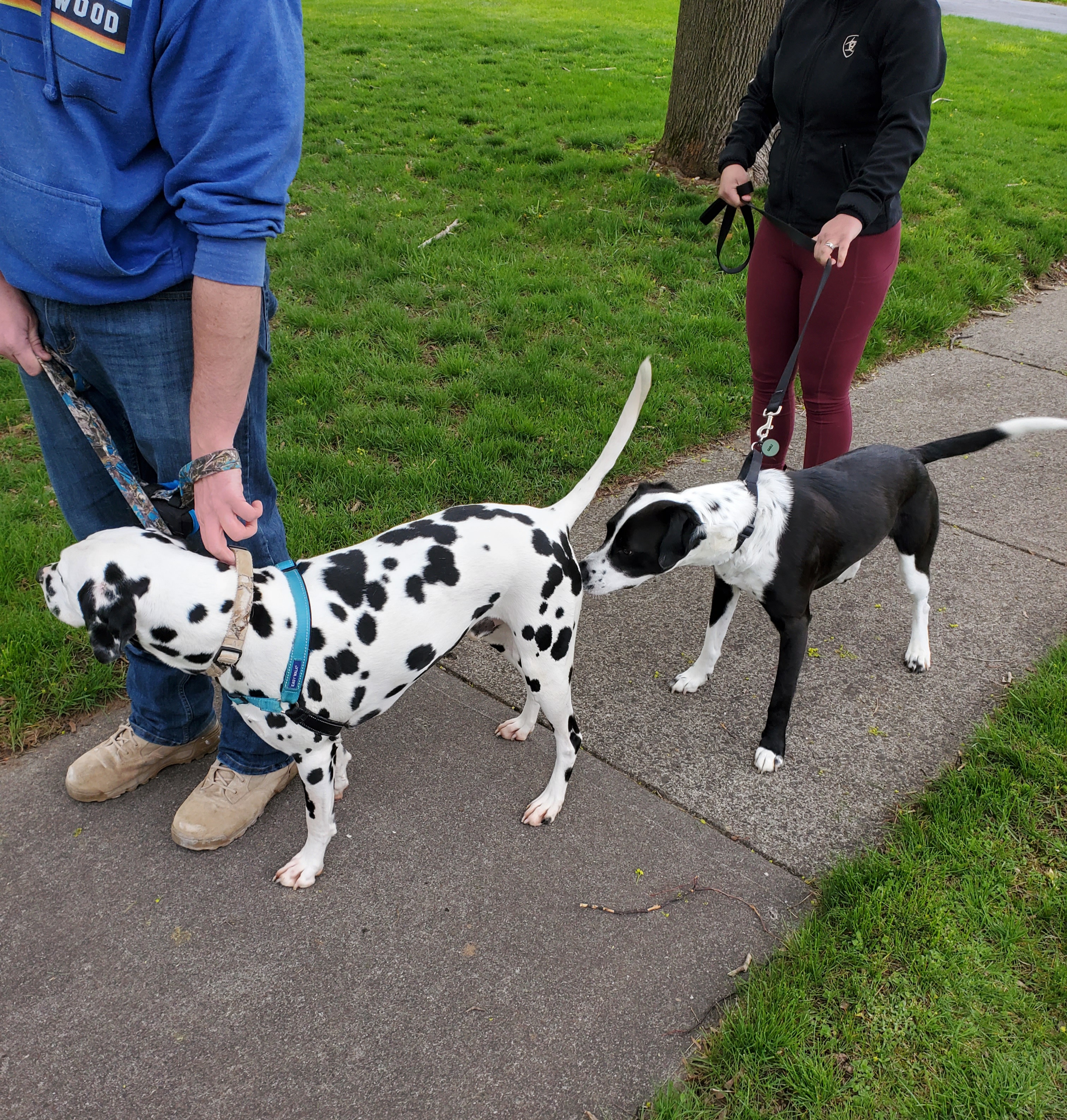
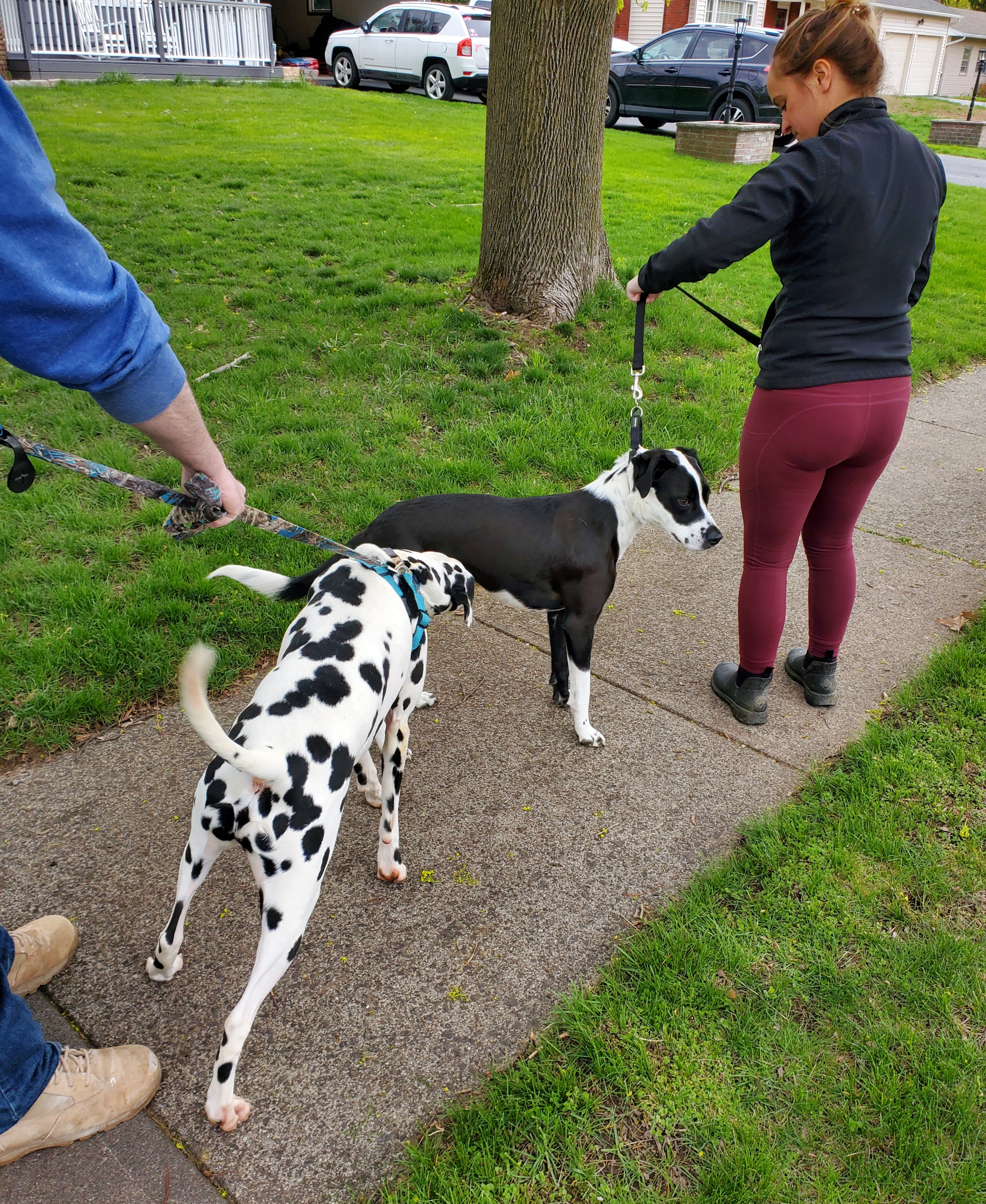
Play Time
Now that you’re home, you can let the dogs play. Give everyone a loose leash and allow them to play bow, nose bop, or bounce. After a few minutes of everyone showing great communication, if you have a fenced area, allow your dog to go off leash. If you do not have a fenced area, switch your dog to a long line. As long as everyone is comfortable, after a few minutes unleash the new dog or switch them to a long line. Keep an eye out for positive and negative play behavior, more information here.

Signs You Should Stop Introducing Dogs
Excessive Barking
Continuous barking may not be reactive or aggressive but it can lead to problems. Barking over and over again is a very rude behavior and lots of dogs will not socialize with another dog who is being rude. One dog barking in another’s face can lead to a correction which can lead to issues, if handled incorrectly. It is best to make sure you do not get to that point. If someone is barking with no signs of stopping, end the walk and try again another day.
Stiffness
If a dog becomes stiff this is a sign of fear which can quickly become reactive. Do not pressure the dog to continue the walk or introduction. Quickly put space between the two dogs and allow the fearful dog to relax. The best action would be to get a trainer involved to help the dog build confidence when socializing.
Attempting to Flee
This is the ultimate sign of fear. One of the dogs is not comfortable and wants out of the situation. Do not press the dog to continue and get space between the two dogs. Again with this, get a trainer involved to help the dog build confidence when socializing.
Growling
Growling is the biggest, loudest warning sign a dog can give. Do not ignore it! If one of the dogs is growling, stop immediately. They are letting you know they are not comfortable and pressing forward can lead to a disaster.
Snarling
Snarling is another sign that the dog does not want to meet another dog. This is where the dog curls their lips so you can see their pearly white teeth. This is a dog’s way of asking for space because they are in a stressful situation. Again, do not ignore this, do not continue forward and end the walk safely.
Barking with Teeth
If one of the dogs is barking and you are seeing teeth as they bark, this is a sign of a reactive dog. It is a very distinct action and you’ll notice it right away. Do not continue the walk and do not try again later. This dog will need some training and help socializing in the future.